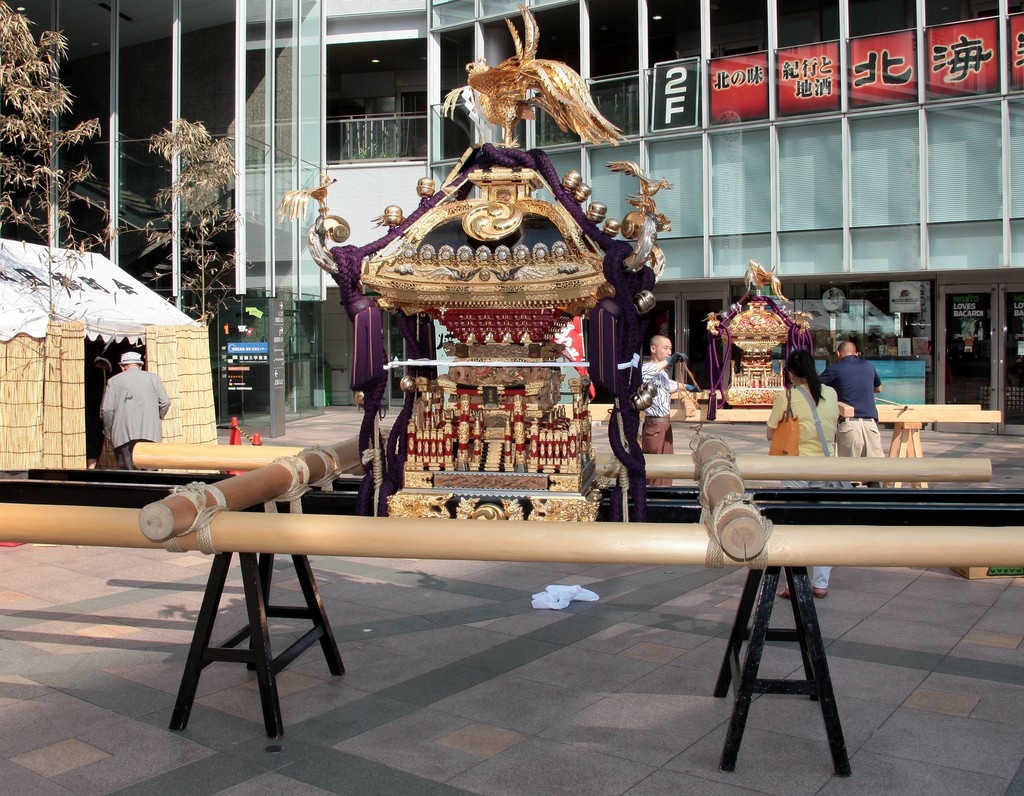MIKOSHI PREPARATION DE LA CHASSE PORTABLE
Un mikoshi (神輿 ou 御輿, "palanquin divin") est, dans les rituels shintoïstes, une châsse portable que les fidèles (hommes ou femmes) transportent dans les rues d'un quartier au cours d'une procession, souvent lors d'un matsuri. La préparation du mikoshi est la suivante :
-------------------------------------------
A mikoshi (神輿 or 御輿) is a divine palanquin (also translated as portable Shinto shrine). Shinto followers believe that it serves as the vehicle to transport a deity in Japan while moving between main shrine and temporary shrine during a festival or when moving to a new shrine. Often, the mikoshi resembles a miniature building, with pillars, walls, a roof, a veranda and a railing. Typical shapes are rectangles, hexagons, and octagons. The body, which stands on two or four poles (for carrying), is usually lavishly decorated, and the roof might hold a carving of a phoenix.
- Les prêtres placent la relique du sanctuaire, incarnation physique du kami, dans le mikoshi. Ils portent pour cela des masques et des gants pour ne pas souiller le kami.
- Le prêtre principal prononce ensuite les incantations sacrées et appelle le kami à s'incarner dans le mikoshi.
- Il scelle enfin le mikoshi, qui est ensuite transporté à travers tout le quartier pour attirer la bénédiction du dieu.
-------------------------------------------
A mikoshi (神輿 or 御輿) is a divine palanquin (also translated as portable Shinto shrine). Shinto followers believe that it serves as the vehicle to transport a deity in Japan while moving between main shrine and temporary shrine during a festival or when moving to a new shrine. Often, the mikoshi resembles a miniature building, with pillars, walls, a roof, a veranda and a railing. Typical shapes are rectangles, hexagons, and octagons. The body, which stands on two or four poles (for carrying), is usually lavishly decorated, and the roof might hold a carving of a phoenix.
